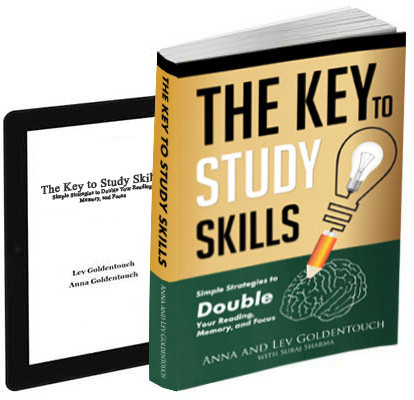Transcreation and localisation are methods that help brands communicate effectively with people in different countries. Transcreation means adapting content so it keeps the same emotion and meaning in another language. Localisation ensures that products, websites, or campaigns fit local culture, habits, and preferences. Together, they make global marketing feel natural and relevant to local audiences.
Brands cannot rely on the same message for every region. Each country has its own culture, language, and consumer expectations. Understanding the latest trends in transcreation and localisation can help businesses stay ahead. These trends show how brands can connect better, reach more people, and create messages that truly resonate with their audience.
Trend 1: AI + Human Collaboration
One of the most significant trends in transcreation is the combination of artificial intelligence (AI) and human expertise. AI tools can process large amounts of text in seconds, providing fast translations and initial adaptations. For example, AI can quickly localise product descriptions, social media posts, and marketing emails for multiple regions simultaneously. This speed is particularly valuable for industries like retail, e-commerce, and hospitality, where content must be updated frequently.
However, AI cannot fully replace human understanding. Machines may translate words accurately but often miss cultural subtleties, humor, or the brand’s emotional tone. Human reviewers are essential to ensure that content feels natural and emotionally resonant for the target audience. Brands are increasingly using a hybrid approach where AI handles repetitive tasks while humans add creativity and cultural insight. This combination saves time, reduces costs, and produces content that truly connects with local audiences.
Trend 2: Hyper-Personalisation for Local Audiences
Personalisation has evolved into hyper-personalisation, where content is tailored not just to demographics but to cultural values, traditions, and consumer behavior. For instance, a campaign designed for Singapore might emphasize efficiency, urban lifestyle, and tech-savvy habits, while the same campaign in Europe might highlight sustainability and heritage.
Localisation now goes beyond language adaptation—it involves adjusting visuals, references, humor, and even product offerings to fit regional preferences. Hyper-personalised content helps brands build stronger emotional connections and loyalty. As markets become more competitive, companies that ignore cultural context risk appearing generic or out of touch. Hyper-personalisation is especially important for luxury brands, lifestyle products, and hospitality services, where the brand experience is closely tied to cultural perception.
Trend 3: Multimodal Content (Text + Visuals + Social)
These days, transcreation and localisation extend far beyond written text. Brands must adapt content across multiple channels, including video, social media, and interactive platforms. Short-form videos, Instagram Reels, TikTok content, and website visuals all need localisation to appeal to regional audiences. Simply translating captions or scripts is no longer enough—visual cues, music, gestures, and color schemes can carry different meanings in different cultures.
Many agencies now use creative translation approaches to adapt brand voice for these diverse media formats. For example, a promotional video for a hotel in Singapore may highlight urban attractions and tech convenience, while the same campaign in Dubai may focus on luxury, tradition, and exclusive experiences. Multimodal localisation ensures that brand messaging is consistent, culturally relevant, and engaging across all touchpoints.
Trend 4: GEO-Specific Adaptation
Geo-specific localisation is becoming increasingly important. Every region has unique cultural norms, consumer behavior, and regulatory requirements. For instance, marketing content in Singapore should respect local values and preferences, while campaigns for European countries may need to follow strict data privacy laws and sustainability expectations. Brands that understand these differences can create content that resonates deeply with local audiences.
Many global companies rely on experienced partners like IPPWORLD to handle geo-specific localisation. Working with regional experts ensures that campaigns maintain brand consistency while adapting to local tastes. GEO-focused strategies also help brands enter new markets more smoothly and avoid potential pitfalls related to cultural misunderstanding or regulatory non-compliance.
Trend 5: Inclusive & Sustainable Messaging
Consumers increasingly value inclusivity and sustainability. Brands are expected to communicate messages that reflect social responsibility, gender neutrality, and environmental awareness. This trend impacts how content is transcreated and localised across markets. For example, terms or visuals that are acceptable in one country may be inappropriate or offensive in another. Brands must carefully adapt messaging to align with both global values and local sensitivities.
Inclusive messaging also helps brands reach wider audiences and foster trust. Sustainable practices, such as eco-friendly packaging or promoting local artisans, can be highlighted differently based on regional priorities. By integrating inclusivity and sustainability into transcreation strategies, businesses can enhance their reputation and resonate with modern consumers who prioritize ethical and responsible practices.
Conclusion
Transcreation and localisation are no longer optional; they are essential for brands operating in global markets. From AI collaboration to hyper-personalisation, multimodal content, geo-specific adaptation, and inclusive messaging, the field is evolving rapidly. Companies that stay ahead of these trends can build stronger connections with local audiences, maintain brand consistency, and avoid cultural missteps.
By understanding and applying these strategies, businesses can ensure their messaging resonates globally while still feeling local. Staying informed about the latest trends in transcreation and localisation is key to long-term success in an increasingly connected world.

Get 4 Free Sample Chapters of the Key To Study Book
Get access to advanced training, and a selection of free apps to train your reading speed and visual memory

